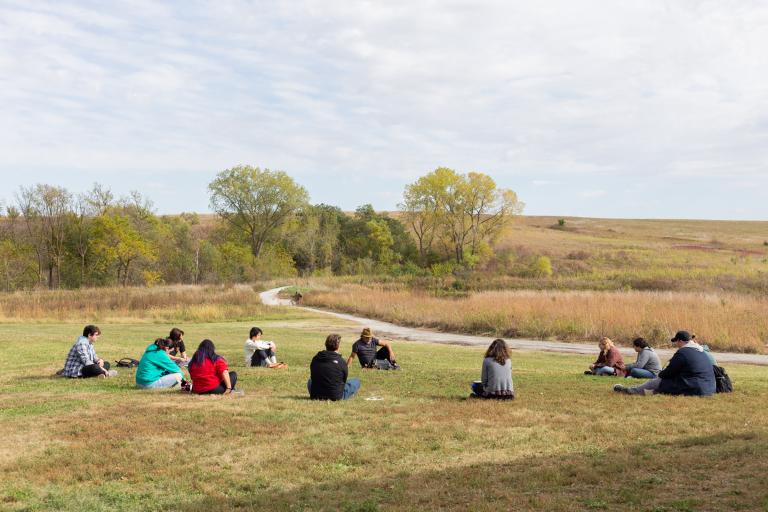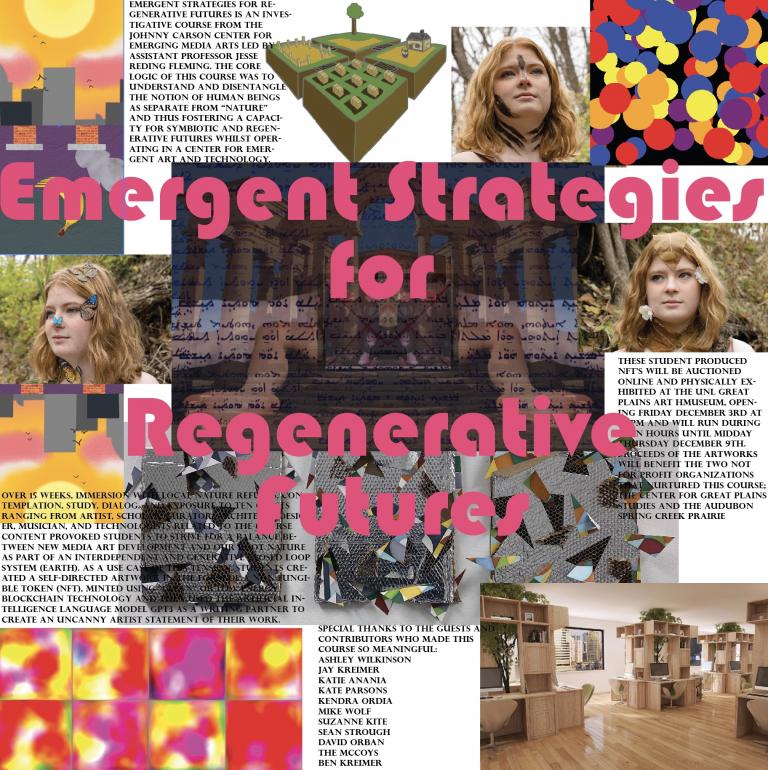
Carson Center student-produced NFTs to be auctioned, exhibited at Great Plains Museum
calendar icon01 Dec 2021

Lincoln, Neb.--Students in Assistant Professor of Emerging Media Arts Jesse Reding Fleming’s Innovation Studio course Emergent Strategies for Regenerative Futures have produced NFT projects that will be auctioned online and exhibited physically at the Great Plains Art Museum.
The exhibition opens Friday, Dec. 3 from 5-7 p.m. and will run during open hours of the museum until Thursday, Dec. 9. The museum is located at 1155 Q St. Proceeds from the artworks will benefit the two not-for-profit organizations that nurtured the course, the Center for Great Plains Studies and the Audubon Spring Creek Prairie.
The Innovation Studio course in the Johnny Carson Center for Emerging Media Arts is a faculty-guided exploration of a topic or theme of wide-ranging emerging media arts projects. Emergent Strategies for Regenerative Futures is an investigative course that combined both nature and technology.
“The core logic of this course was to understand and disentangle the notion of human beings as separate from ‘nature’ and, thus, fostering a capacity for symbiotic and regenerative futures whilst operating in a center for emergent art and technology,” Fleming said. “Over 13 weeks, immersion with local nature refuges, contemplation, study, dialog and exposure to 10 guests, ranging from artist, scholar, curator, architect/designer, musician and technologists related to the course content provoked students to strive for a balance between new media art development and our root nature as part of an interdependent and generative closed-loop system (Earth).”
As a use case of this tension, students created a self-directed artwork in the form of a non-fungible token (NFT), minted using “clean” or low-energy blockchain technology, and then used the Artificial Intelligence language model GPT3 as a writing partner to create an artist statement of their work.
Those NFT’s will be available to view at the Great Plains Art Museum during regular business hours Dec. 4-9 and will be auctioned online at https://go.unl.edu/nftauction from Dec. 3-8.
The guests and contributors to the course included:
• Ashley Wilkinson, Director and Curator, Great Plains Art Museum
• Jay Kreimer, sound artist, sculptor and musical instrument inventor
• Katie Anania, Assistant Professor of Art History, School of Art, Art History & Design
• Kate Parsons, new media artist, curator, educator, co-founder Primal U
• Kendra Ordia, Assistant Professor of Interior Design, UNL College of Architecture
• Mike Wolf, Educator, Ponca Tribe member, addiction specialist
• Suzanne Kite, Oglala Lakota performance artist and composer, AI theorist and practicioner
• Sean Strough, Equipment and Technology Associate, Carson Center
• David Orban, investor, entrepreneur, author, and thought leader of the global technology landscape
• Kevin and Jennifer McCoy, media artists
• Ben Kreimer, Technologist in Residence, Carson Center
• Mike Forsberg, Platte Basin Timelapse